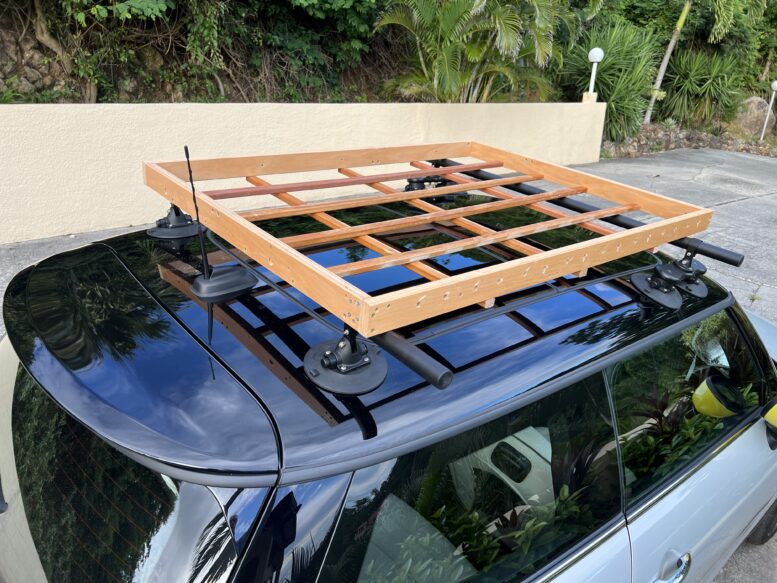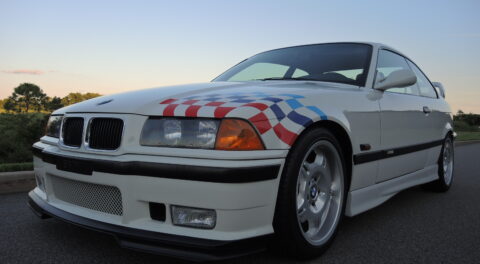Yes, it is true: I am living on a tropical island where the roads resemble the tarmac stages of an FIA World Rally—but not as smooth. Oh, and to make it more interesting, they drive on the left here. Which would be easier if they maintained the roads a little more carefully, like repainting the center lines—wait, what?! There’s supposed to be a center line?!—more than once every three or four hurricane seasons.
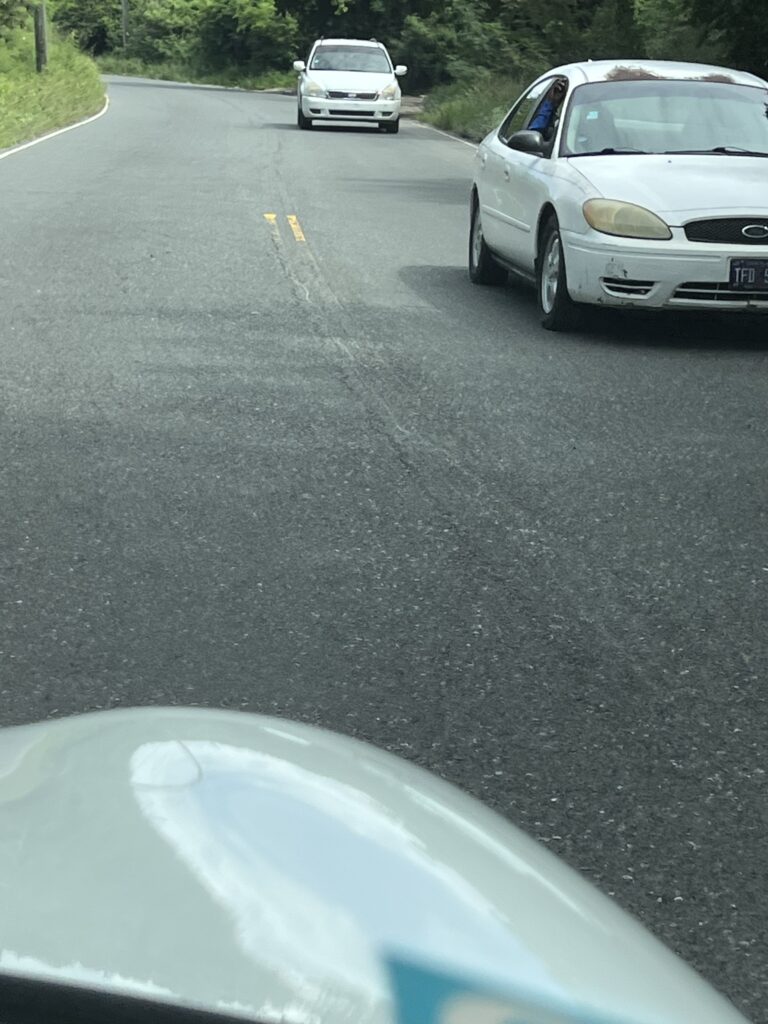
See? There IS a center line!
You say you like back-roads driving, all twists and turns? Hey, in this place, there are hardly any front roads. Nor are there any sidewalks. Or breakdown lanes. Or shoulders. The amazing thing is that drivers here are courteous and helpful, letting side-road traffic enter the flow, waving and smiling. I think that everybody is simply euphoric at simply being here, marooned in Paradise, where the roads are crap, but spirits are high. And it was into this edenic environment that we shipped the electric Mini (license plate GNOHM).
It took only a month for the roads—specifically, one malicious pothole—to rise up and sink its fangs into a tire.
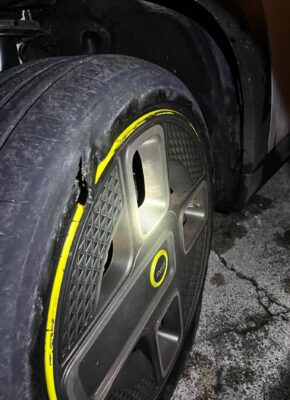
Um, I don’t think the Fix-a-Flat is going to work.
And that was on the highway—or what passes for a highway here. Get off the highway onto the true back roads, only some of which have names, and the driving is sheer adventure. For one thing, just as America followed ancient Native American trails, and the Native Americans followed animal trails, I think that we’re driving on roads laid out over trails left by migrating iguanas. And whoever paved these roads to begin with probably owned a Volkswagen, if not a Model T, because the roads are just about two VWs wide, and who could possibly ask for more than that?
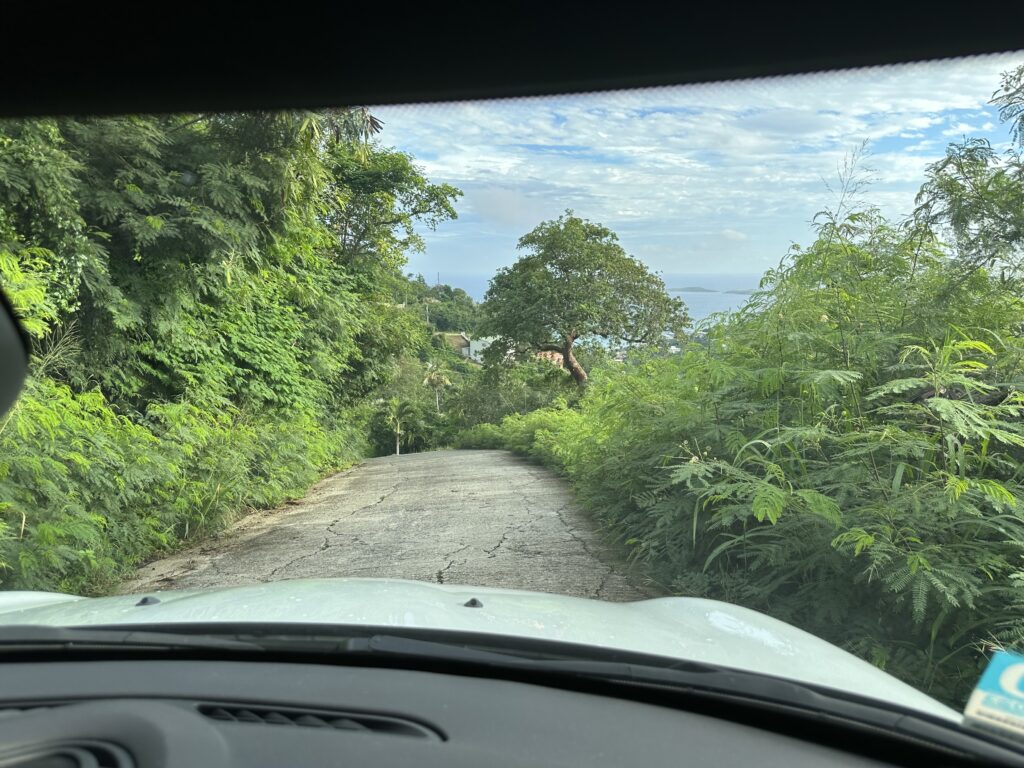
Yes, two cars will fit…
Of course, time and weather—this place does get occasional weather—can take their toll on the best-laid highways, so you can imagine what fun they have here.

… but one car might be submerged.
Now, the roads are maintained, after a fashion, but I am not sure that this maintenance is official. Occasional holes seem to be filled by an arbitrary splooge of concrete, as if a coprolitic deposit from some prehistoric creature from the Pleistocene, something large with a bad digestive tract.
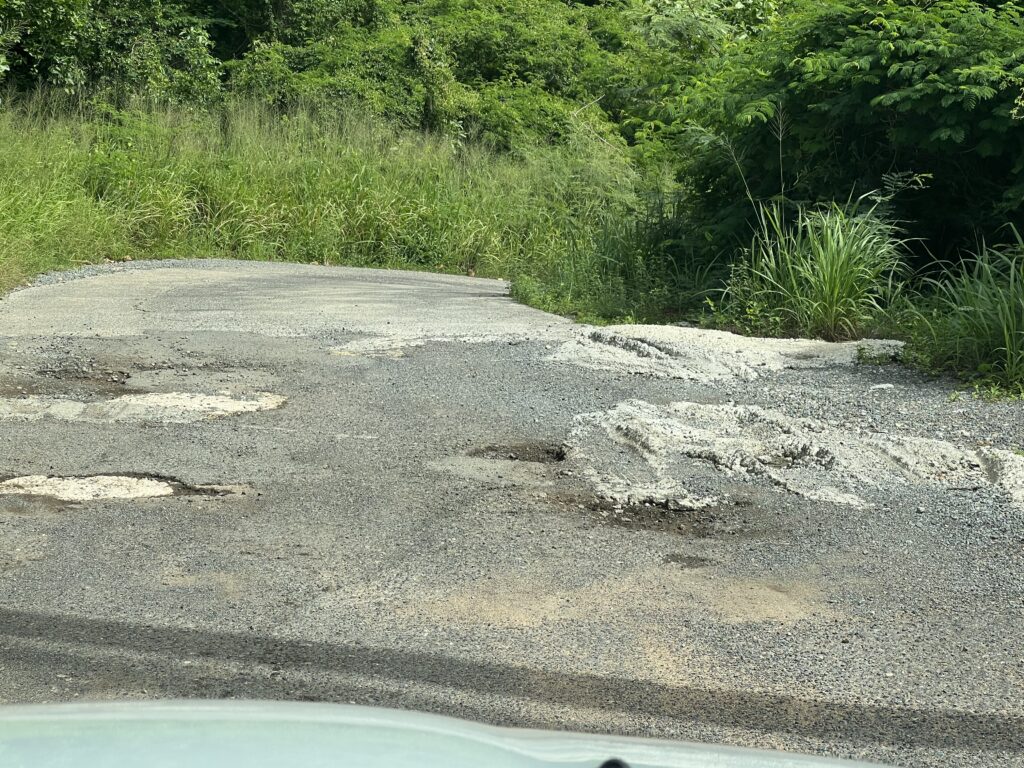
Are these road repairs or coprolites?
Aside from the tire-eatin’ rally stages, the countryside is steep and rocky, so parking becomes a creative activity. There is a smashed-up car at the side of the road not far from our rental condo; its owner finally had to tape a sign inside the window explaining that it has not been abandoned, it is merely waiting for the insurance adjusters to do their magic. It has been there since before we arrived in September. And there is a Jeep parked not too far away on a relatively flat piece of real estate that has been in one place for a long while.
Island time.

I don’t know how it got there or why it’s there, but it’s definitely there.
So a person needs a luggage rack.
Well, okay: I suppose the luggage rack really has nothing to do with the island roads, but it was definitely an island project, because when you live in a place like this, people want to visit, and of course you insist on picking them up at the airport—don’t pay for a taxi, are you mad?! We’ll come and get you!
But people invariably have baggage, and I’m not talking about your childhood trauma. So even before flying south for the duration, Party A started scoping out luggage racks for the Mini Cooper, because it’s a Mini, for God’s sake, and while it will definitely carry four people in intimate comfort, if they’ve brought anything with them other than a Speedo and a roll of dental floss, then you need a luggage rack.
But have you seen what those things cost?!
First of all, this Mini Cooper SE did not come equipped with roof rails, which are to cars as eaves are to houses, I suppose. If I remember correctly, to retrofit roof rails would cost something like a thousand bucks, and aftermarket solutions ranged all over the place—and that’s just for the basic structure that supports the luggage carrier, or basket, or pod, or whatever. “Just get me some bars,” I growled, “and I’ll build my own damn luggage rack!”
It is not always a good idea to toss out a challenge like that. In no time Party A had tracked down and purchased a set of Sea Sucker roof bars, for a measly oh my god! price. These sturdy bars come equipped with ginormous suction cups, and when I assembled the bars and slapped them on the car, I was satisfied that they would work. Then I tried to renege on my do-it-myself promise and began to look at the prices of the various accessories that you can attach to the bars, in order to carry your surfboards, your bicycles, Mitt Romney’s dog, or some luggage, leading to another oh my god moment.
Back to doing it myself.
By this time the Great Move was in motion. The GNOHM car was shipped off and a pack of household movers descended on Mondo Condo to bundle our belongings into boxes and haul them away, leaving me to ferry everything left in the garage to a nearby rental garage, with plans to organize this flotsam and eventually join Party A. But the Sea Sucker bars were still with me, as was the cast-off effluvia of fifteen years in Mondo Condo.
Like these umbrella sticks.
Well, I don’t think that’s their correct nomenclature, but these are the remains of a patio umbrella that gave up the ghost some years ago, at which point I disassembled its skeleton and wound up with these spokes or ribs or whatever they’re called, which of course I kept because you never can tell when you might need something like this. And then there were the two-by-three-inch plywood boards that I think I salvaged from a bed frame or something that somebody discarded next to the Dumpster. So I figured that I had the makings of an acceptable luggage carrier.
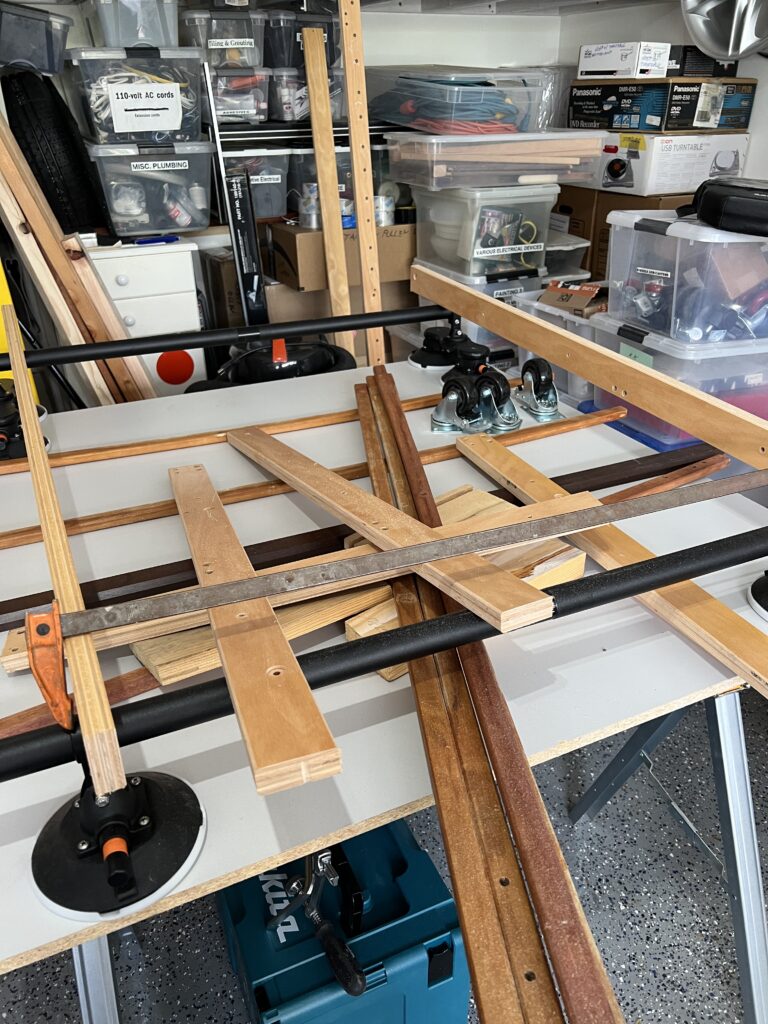
We ought to be able to make something out of this!
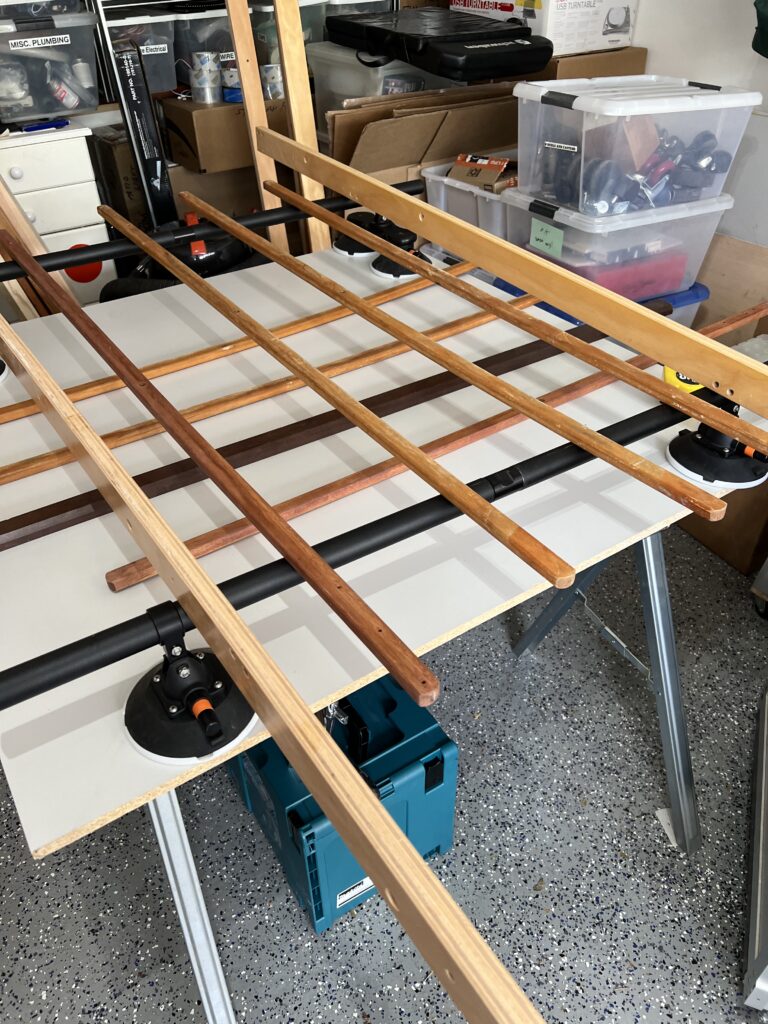
First, guess at the size of the Mini roof.
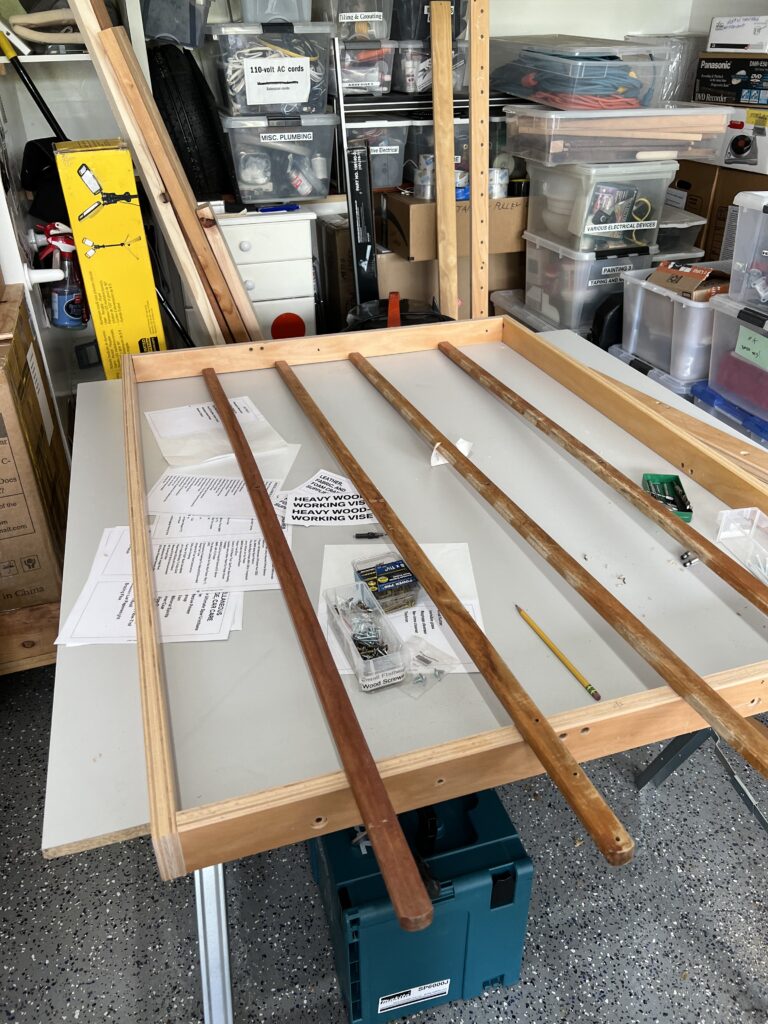
Let’s see: Long pieces first…
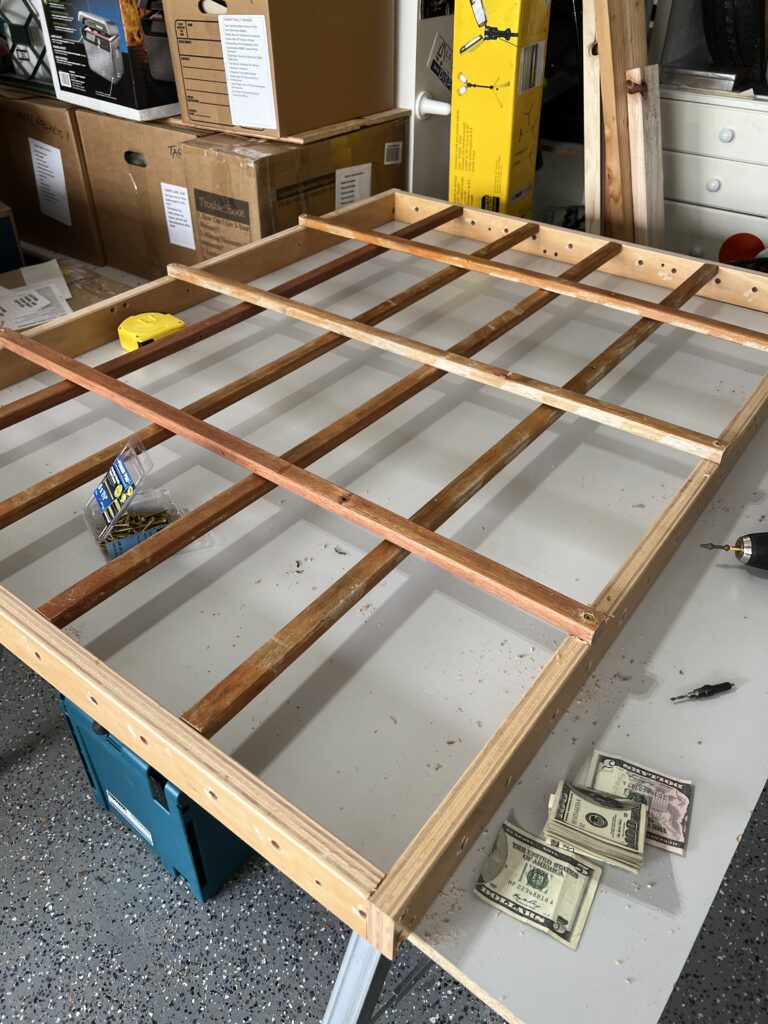
… then the cross pieces.
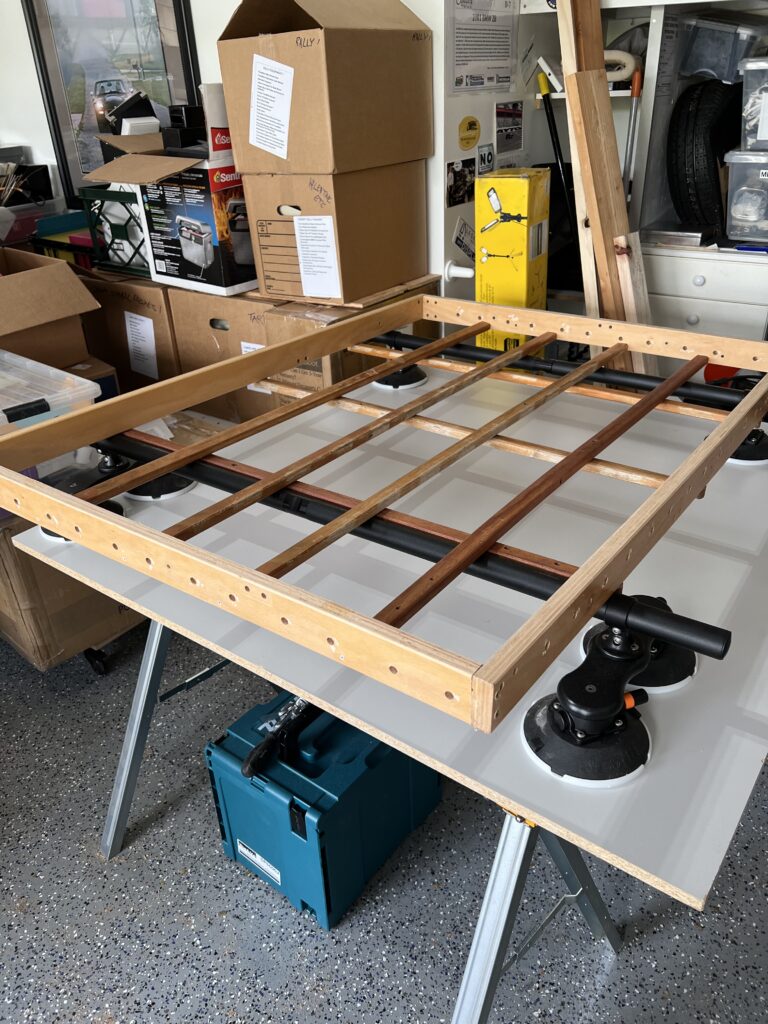
That ought to do it!
Once the baggage basket was complete, held vaguely together with whatever screws I could find in the rubble, it was time to disassemble the whole shebang, and pack the bars, the suction cups, and the sticks into a box and mail it to the post-office box Party A had rented.
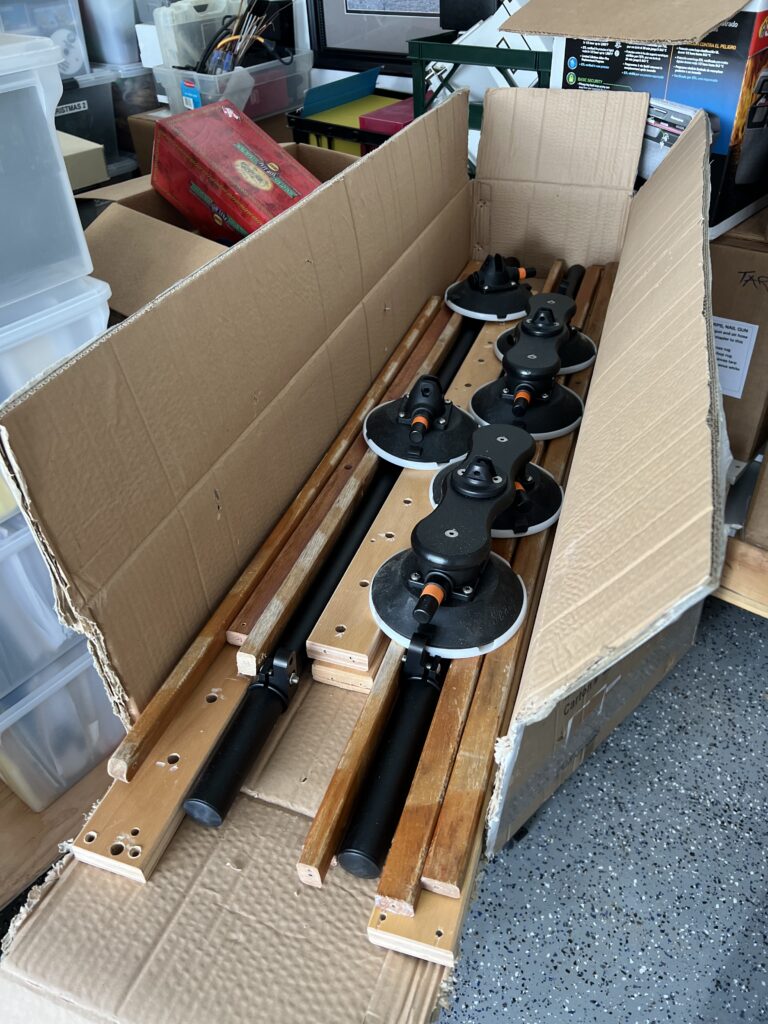
Put everything into a box…
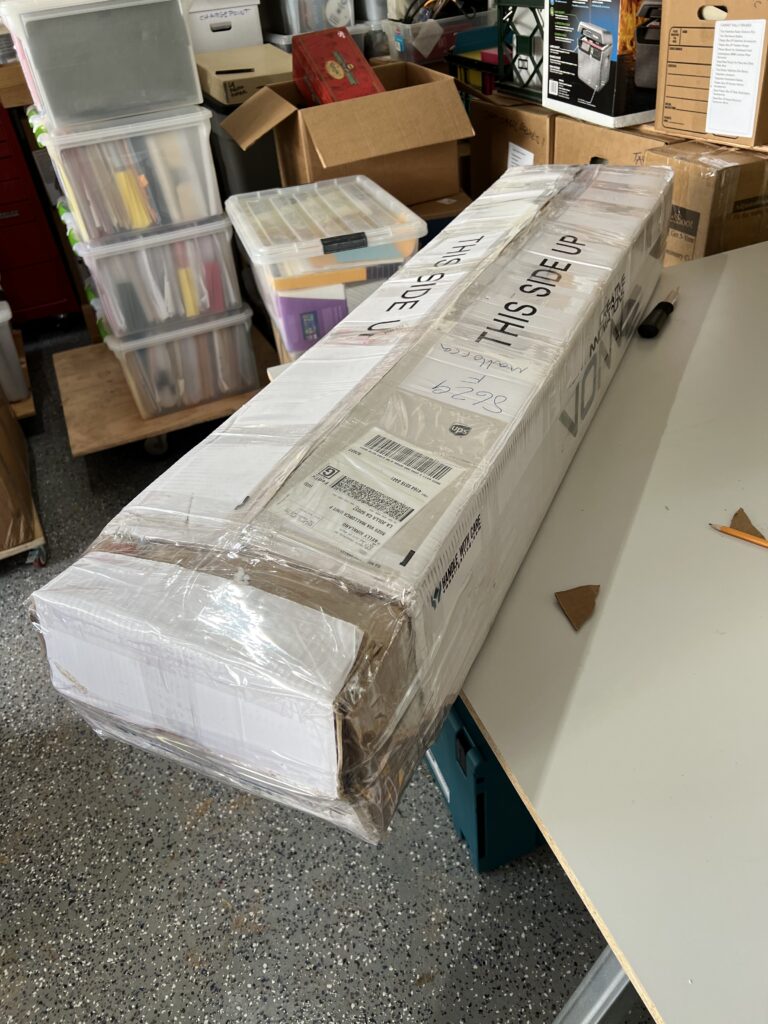
… and mail it off!
Now, here’s the thing: It requires a certain number of tools to mash together a luggage rack, and most of my tools would be left behind for the nonce. But when I packed the Great Luggage Rack Kit, I also included everything that I thought I might need in order to reassemble it. Sure enough, when the white box finally arrived on the island a couple of weeks after I landed there, I unpacked my Bosch 12-volt battery drill, my Snap-On ratchet T-handle, and a DeWalt right-angle drill accessory that I bought on speculation last year. A quick visit to Home Depot to rearm myself with Torx-head screws, and I was ready to spend a pleasant afternoon on the patio reassembling my baggage basket.
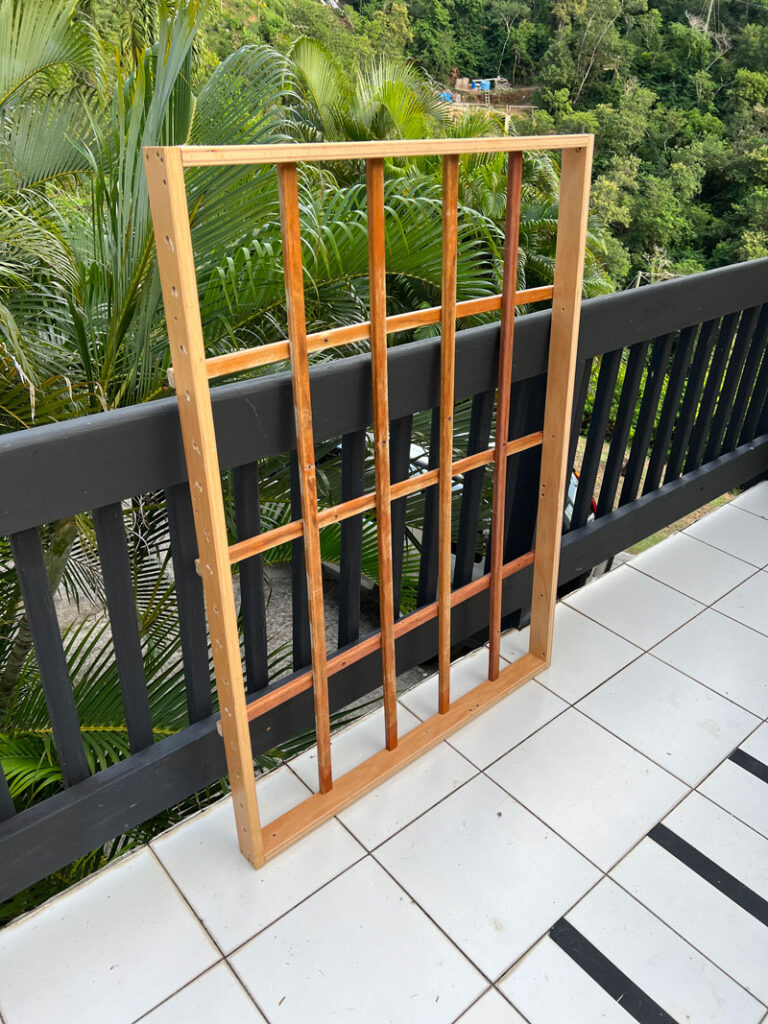
The basket is finally ready to be attached.
Of course, I had not made any final connections between the wooden basket and the Sea Sucker bars back in San Diego, because I did not have the precise dimensions of the Mini’s roof. So now it was time to put the bars in place, position the basket, and mark the locations for the holes that would secure (I hoped) the basket to the bars by way of some inch-and-a-quarter cable brackets. (I am wary of them because they are plastic, but in a salt-air environment, I don’t trust metal, either.)
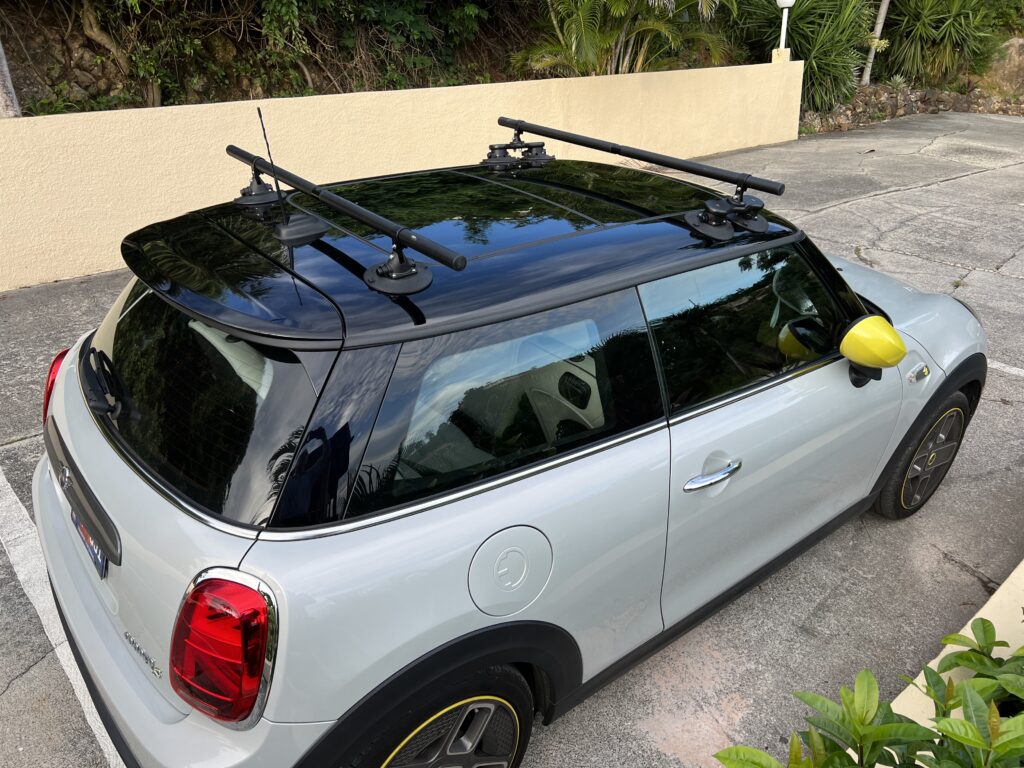
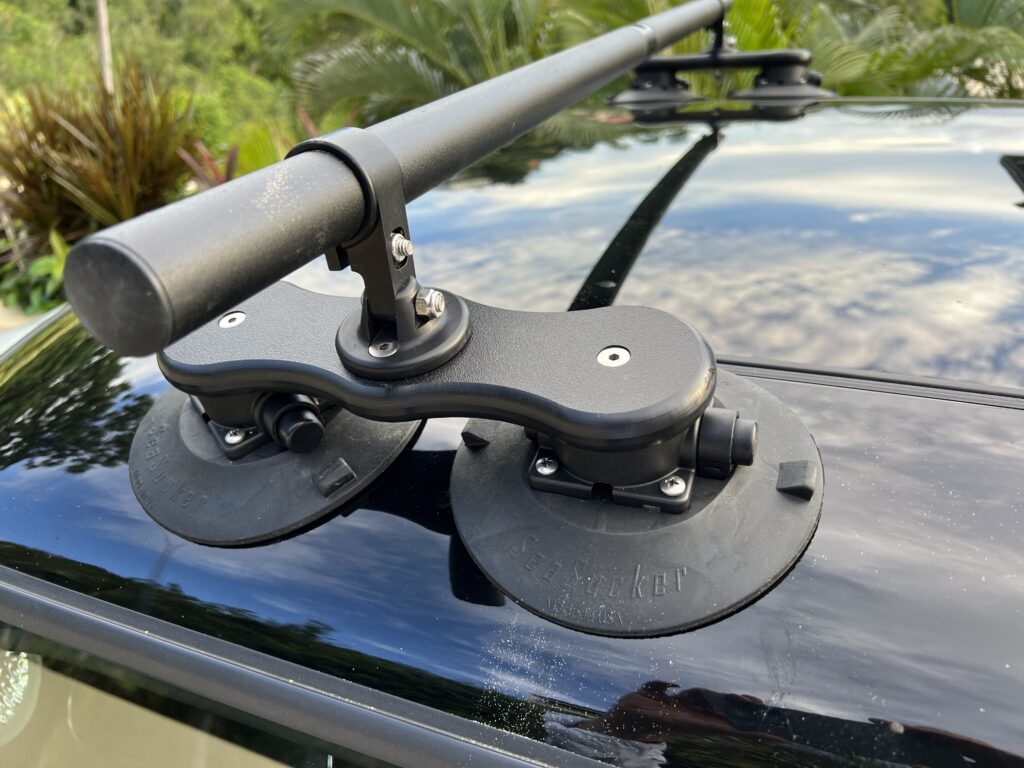
The suction cups seem to hold the bars securely: four in front, two in back.
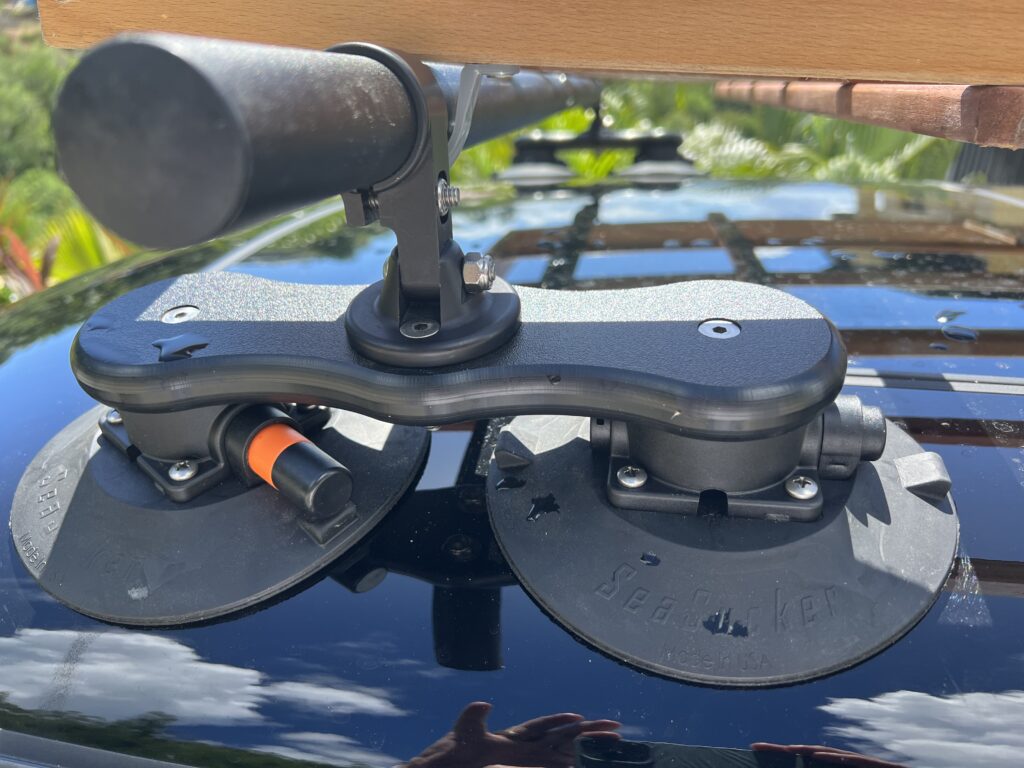
If the orange band is visible, it’s time to pump up the volume—er, vacuum.
Now, with the bars in place on the car, and the basket balanced strategically on the bars, it was time to install the plastic brackets—from underneath. That’s where my thoughtful selection of travel tools paid off: Connecting the T-handle to the right-angle drill accessory enabled me to squinch in the Torx screws from below.
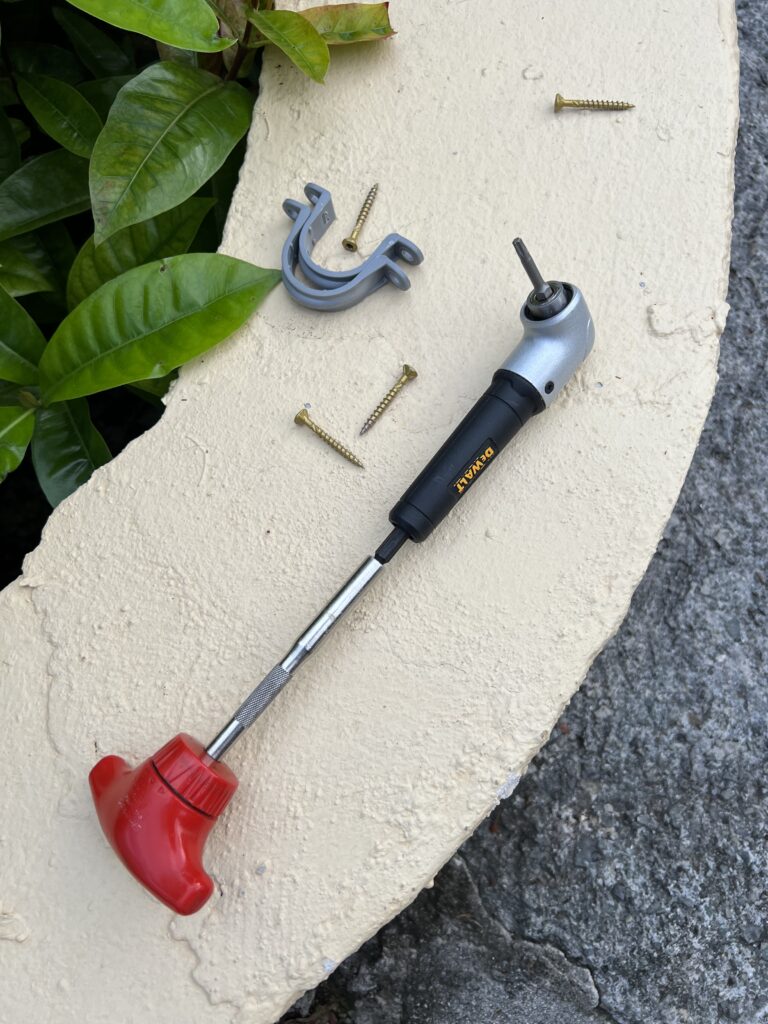
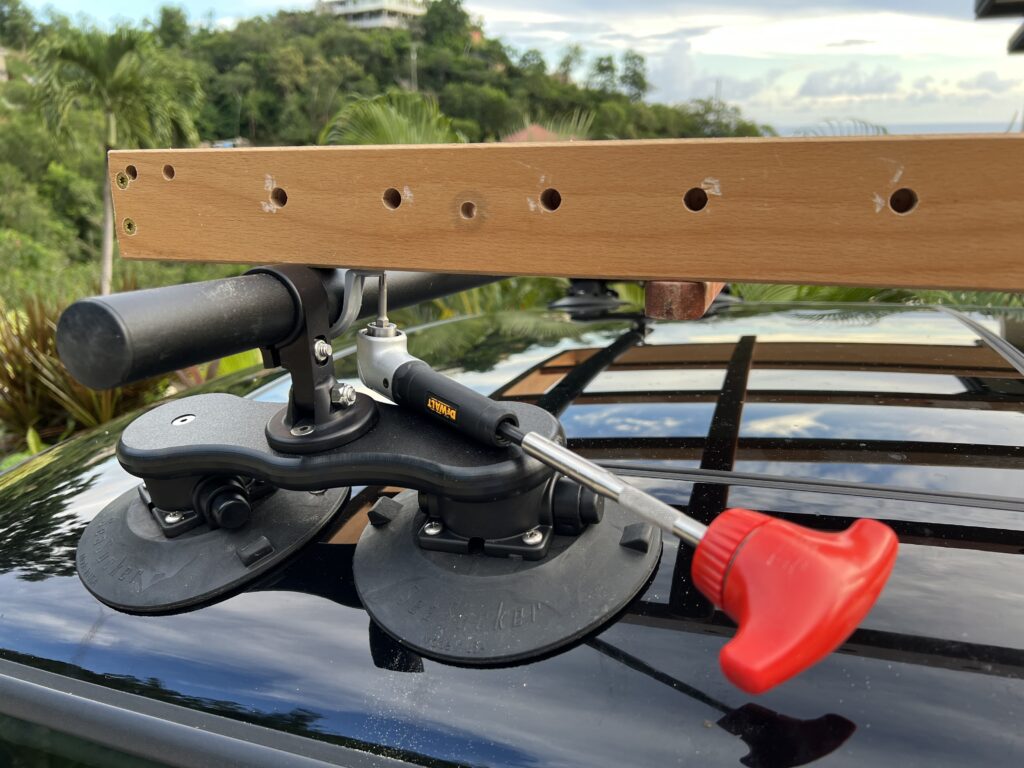
The T-handle and right-angle drive made final assembly a simple possibility.
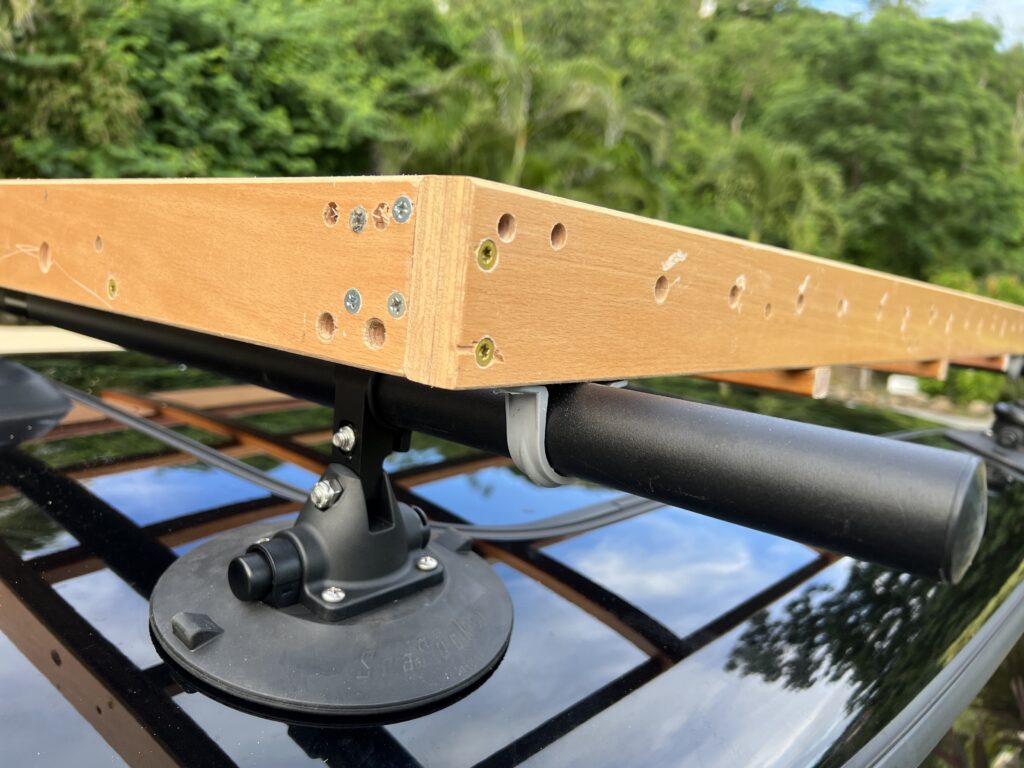
The plastic brackets seem secure—for now.
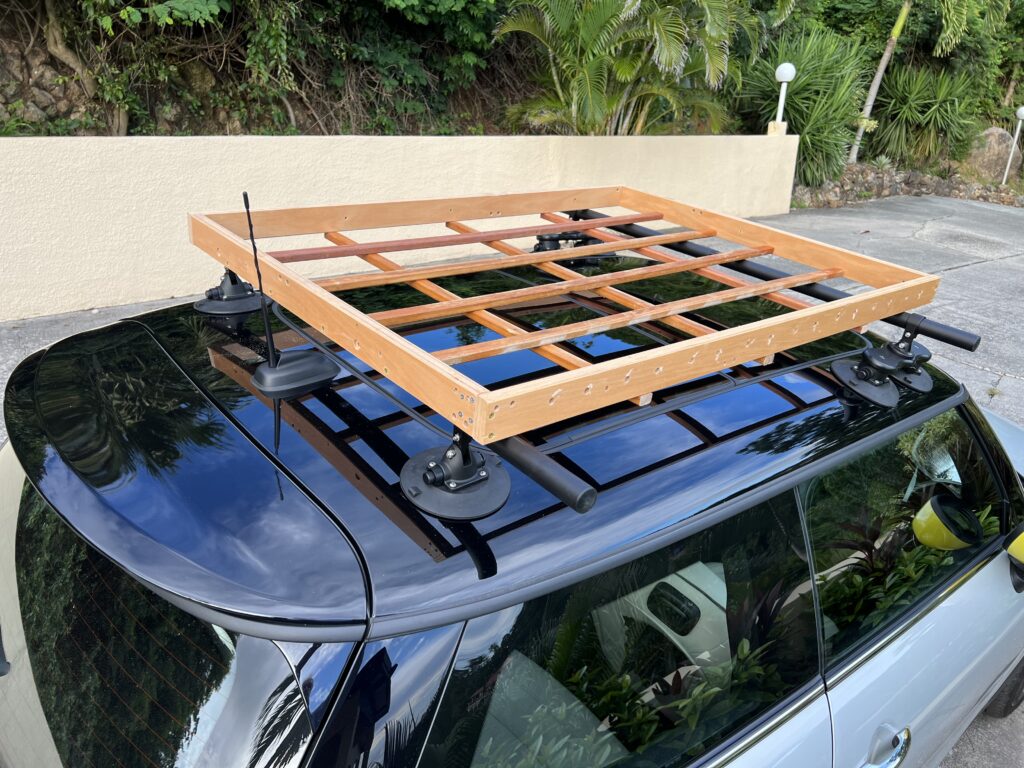
The finished product: ta-daaah!
Why, yes, now that you ask: I did finish this project on the morning of our friends’ arrival, but still with plenty of time to pick them up at the airport. And while it turned out that they were both traveling only with smallish duffels that could probably have been squished into the Mini’s austere luggage area, I insisted on using the umbrella-stick creation on the roof, lashing everything down with bright orange ratcheting tie-down straps. Worked like a charm.–Satch Carlson

